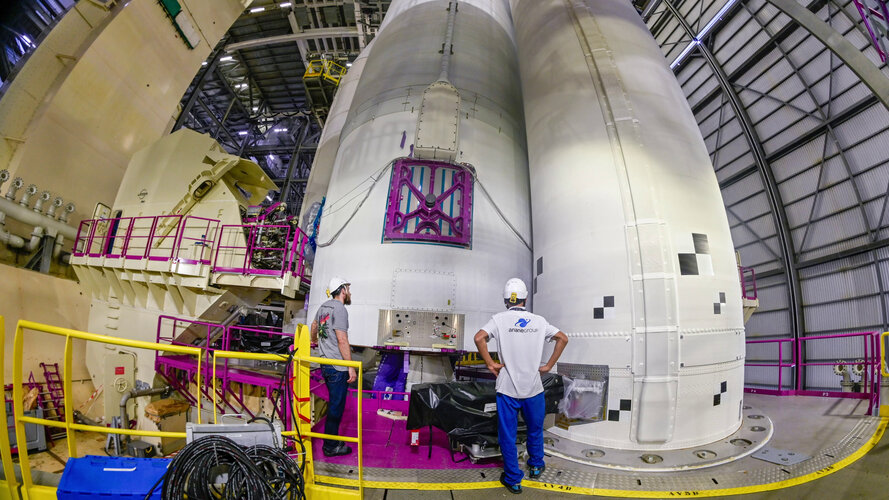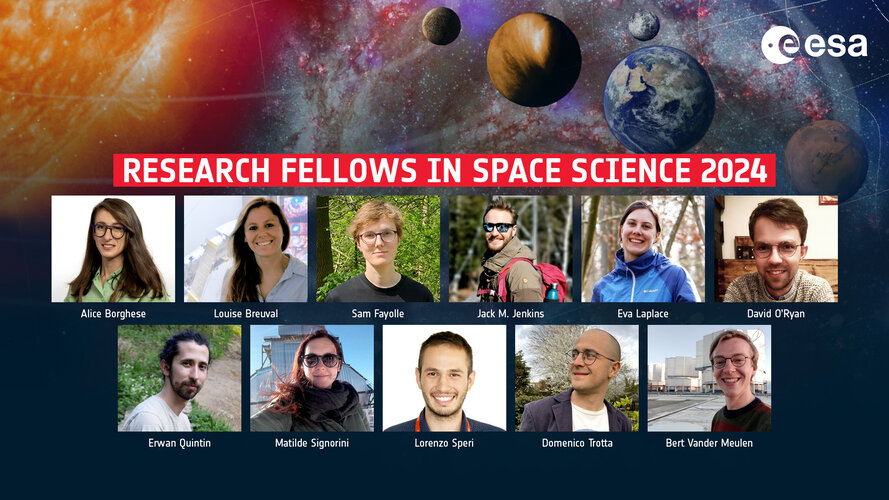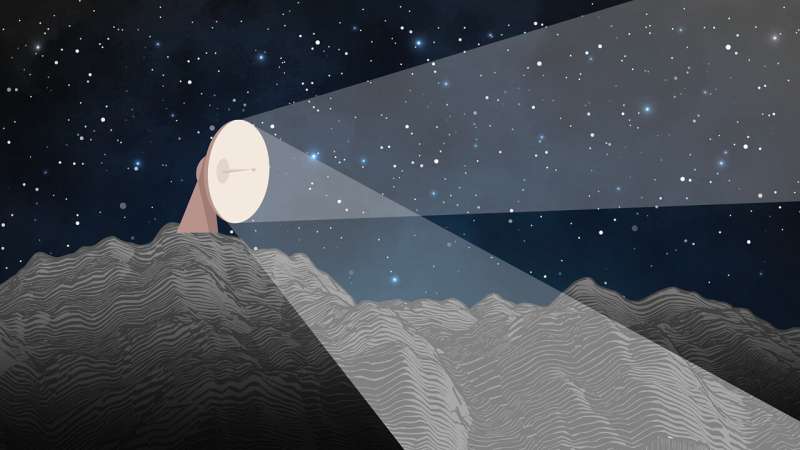Rocket Lab pushes back Neutron debut to 2025
Tuesday, 07 May 2024 15:20U.S. Space Force taps commercial satellites to fill demand for global insights
Tuesday, 07 May 2024 14:30The stakes of Space Race 2.0 could not be higher
Tuesday, 07 May 2024 13:30Ariane 6 first flight: timelapse of transfer and assembly on the launch pad
Tuesday, 07 May 2024 11:00 Video:
00:02:35
Video:
00:02:35
In April 2024, Ariane 6’s central core – the main body of the rocket – was stood tall at the launch zone and connected to its two solid-fuel boosters. This exciting moment means only one thing: it’s the start of the first launch campaign.
The main stage and upper stage make up the core stage, and they were autonomously driven at 3 km/h from the rocket assembly building to the launch pad, 800 m away. Then lifted by a crane, the Ariane 6 core was stood upright on the launch table.
The two boosters were transported to the launch
Research Fellows in space science 2024
Tuesday, 07 May 2024 11:00 Image:
Research Fellows in space science 2024
Image:
Research Fellows in space science 2024 SabreSat: Redwire’s vehicle to dart through very low Earth orbit
Tuesday, 07 May 2024 11:00Key Boeing Starliner test mission postponed shortly before launch
Tuesday, 07 May 2024 10:44 The first crewed flight of Boeing's Starliner spaceship was dramatically postponed around two hours before launch after a new safety issue was identified, officials said Monday, in a fresh blow to the US aerospace giant.
Astronauts Butch Wilmore and Suni Williams were already strapped in their seats preparing for liftoff when the call for a "scrub" came, in order to give engineers time to i
The first crewed flight of Boeing's Starliner spaceship was dramatically postponed around two hours before launch after a new safety issue was identified, officials said Monday, in a fresh blow to the US aerospace giant.
Astronauts Butch Wilmore and Suni Williams were already strapped in their seats preparing for liftoff when the call for a "scrub" came, in order to give engineers time to i Rocket Lab announces supplier agreements for military satellite project
Tuesday, 07 May 2024 01:09Rocket issue scrubs launch of Starliner crewed test flight
Tuesday, 07 May 2024 00:19NGA to tap commercial satellites to patrol maritime hotspots
Monday, 06 May 2024 20:15Search engine focused on Earth data gets new investors
Monday, 06 May 2024 20:00Shining a light on untapped lunar resources
Monday, 06 May 2024 18:59
Near the moon's south pole lies a 13-mile wide, 2.5-mile-deep crater known as Shackleton, named for Antarctic explorer Ernest Shackleton. Shackleton—and craters like it—may contain untapped resources that can be accessed with lunar mining.
Solar energy is the optimal energy source to power lunar mining since it does not need to be transported from Earth, but rather is beamed straight from the sun. The problem with using solar energy within craters is that even during the lunar day, some craters may be in complete shadow.
Led by Dr. Darren Hartl, an associate professor of aerospace engineering at Texas A&M University, researchers at Texas A&M have partnered with NASA Langley Research Center to engineer a solution using solar reflectors to get solar power to the bottom of lunar craters.
"If you perch a reflector on the rim of a crater, and you have a collector at the center of the crater that receives light from the sun, you are able to harness the solar energy," said Hartl.






















